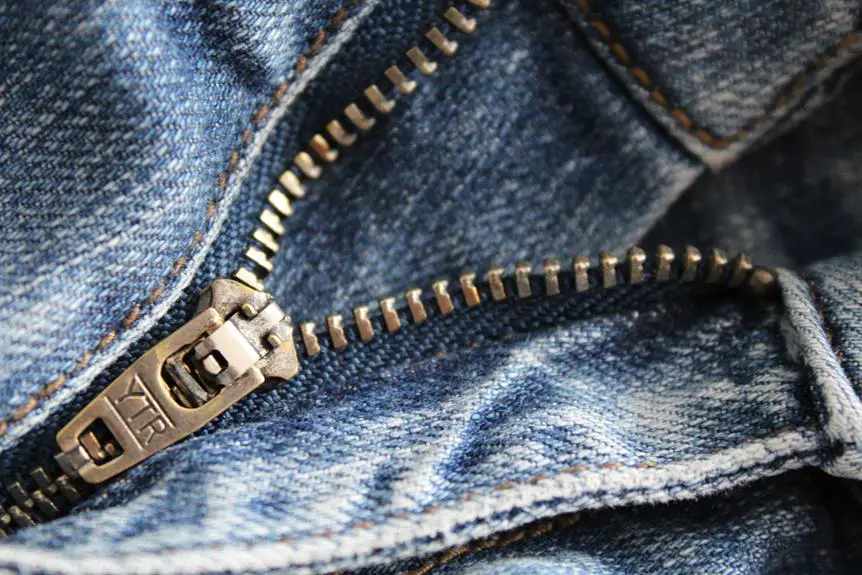When it comes to sewing canvas, choosing the right fabric is crucial for achieving professional results. Understanding the nuances of different fabrics can give your projects the durability and quality they deserve.
In this exploration, you will delve into the intricacies of canvas fabric weight, weaves, durability, strength, fiber content, breathability, and comfort. By mastering the art of selecting suitable finishes and treatments, you can elevate your sewing endeavors to new heights.
Let's embark on a journey of fabric mastery to discover which fabrics are best for sewing canvas.
Key Takeaways
- Lighter-weight canvas, around 4-7 oz/yd2, is suitable for flexible projects like clothing and draperies.
- Twill weave canvas is highly durable and resistant to wrinkles, making it suitable for heavy-duty projects like bags and upholstery.
- Natural fibers like cotton and linen are known for their strength and durability, making them ideal for canvas projects.
- Breathable canvas fabrics made from cotton or linen allow for air circulation, making them suitable for warm weather projects.
Understanding Canvas Fabric Weight
To understand canvas fabric weight, you should consider its impact on the durability and versatility of your sewing projects. Understanding canvas fabric properties is crucial for choosing the right weight for your specific needs.
Canvas fabric is known for its sturdiness and is commonly used for heavy-duty projects such as bags, tents, and upholstery. When comparing canvas fabric weights, it's essential to evaluate the ounces per square yard (oz/yd2) or grams per square meter (gsm).
Lighter-weight canvas, around 4-7 oz/yd2, is suitable for projects requiring more flexibility and drape, like clothing and draperies. Medium-weight canvas, approximately 8-11 oz/yd2, is versatile and commonly used for a wide range of projects, including tote bags, aprons, and light upholstery.
Heavy-weight canvas, 12 oz/yd2 and above, provides exceptional durability and is ideal for items that will be subjected to heavy wear and tear, such as heavy-duty bags, tarps, and equipment covers.
Understanding the differences in canvas fabric weights allows you to select the most suitable option for your sewing projects, ensuring both functionality and longevity.
Exploring the Best Weaves for Canvas
When selecting the best weaves for canvas, consider how the weave impacts the fabric's strength and texture for your sewing projects. Two common weaves for canvas are the twill weave and the plain weave.
- Twill Weave: This weave creates a diagonal pattern on the fabric, making it highly durable and resistant to wrinkles. Twill weave canvas is ideal for heavy-duty sewing projects such as bags, upholstery, and structured garments due to its strength and sturdiness.
- Plain Weave: In this weave, the threads are woven in a simple crisscross pattern, resulting in a strong and balanced fabric. Plain weave canvas is versatile and suitable for a wide range of sewing projects. It's often used for lighter items like tote bags, aprons, and home decor.
When deciding on the best weave for your canvas sewing projects, also consider whether you need a heavyweight or lightweight fabric.
- Heavyweight vs. Lightweight Fabrics: Heavyweight canvas is robust and suitable for projects that require extra durability and structure, such as tents and heavy-duty work aprons. On the other hand, lightweight canvas is more flexible and often preferred for projects like clothing, linings, and accessories.
Understanding the different weaves and weights will help you choose the most suitable canvas for your specific sewing needs.
Evaluating Durability and Strength
Assessing the durability and strength of canvas fabrics is essential for ensuring the longevity and reliability of your sewing projects. Fabric testing is crucial to determine the best canvas for your specific project. Canvas fabrics vary in their weave, weight, and fiber content, all of which impact their durability and strength. When evaluating potential canvas fabrics, consider the intended use of the finished project and the sewing techniques you plan to employ. To help you make an informed decision, here's a comparison of common canvas weaves and their respective durability and strength:
| Canvas Weave | Durability | Strength |
|---|---|---|
| Plain Weave | Moderate | Moderate |
| Twill Weave | High | High |
| Basket Weave | Low | Low |
Understanding the nuances of fabric testing and how different sewing techniques interact with various canvas weaves will empower you to select the most suitable fabric for your sewing projects. By considering durability and strength alongside your intended sewing techniques, you can ensure that your canvas creations stand the test of time.
Choosing the Right Fiber Content
Select canvas fabrics with the appropriate fiber content to ensure the desired strength and durability for your sewing projects. When choosing the right fiber content for sewing canvas, consider the following:
- Natural Fibers: Opt for canvas fabrics made from natural fibers such as cotton or linen. These fibers are known for their strength and durability, making them ideal for canvas projects that require resilience. Cotton canvas is particularly popular for its breathability and softness, while linen canvas offers excellent resistance to stretching and abrasion.
- Blended Fabrics: Look for canvas fabrics that are a blend of natural and synthetic fibers. Blended fabrics combine the best qualities of both types of fibers, offering improved strength and durability. For example, a canvas fabric that blends cotton with polyester can provide enhanced durability and resistance to wrinkles, making it suitable for a wide range of sewing projects.
- Consider the Purpose: Determine the intended use of the canvas project. For heavy-duty applications such as bags or upholstery, a canvas fabric with a higher percentage of natural fibers or a blend of natural and synthetic fibers may be more suitable to ensure longevity and strength.
Considering Breathability and Comfort
How can you ensure that the canvas fabric you choose provides adequate breathability and comfort for your sewing projects?
When considering breathability, look for canvas fabrics made from breathable options such as cotton or linen. These natural fibers allow for air circulation, making them suitable for various sewing projects, especially those intended for warm weather.
Additionally, choosing canvas made from comfortable blends, such as cotton-polyester blends, can enhance the overall comfort of the fabric. These blends often offer the best of both worlds by combining the breathability of natural fibers with the durability and wrinkle resistance of synthetic materials.
When selecting canvas for your sewing projects, it's essential to prioritize comfort, especially if the final product will be in close contact with the skin. Keep in mind that the weave of the fabric also plays a significant role in breathability and comfort. Opt for a medium to loose weave, as it allows for better air circulation, contributing to the overall comfort of the fabric.
Selecting Suitable Finishes and Treatments
When choosing finishes and treatments for canvas, it's important to consider waterproofing and UV protection.
Waterproofing treatments can help ensure that your canvas projects remain durable and resistant to the elements.
UV protection can also help extend the lifespan of your canvas items by shielding them from the damaging effects of the sun.
Waterproofing for Canvas
Choosing a suitable finish and treatment for waterproofing canvas involves considering the fabric's intended use and the level of protection required.
When waterproofing canvas, you can opt for different coating options to enhance rain protection. Some popular choices include wax-based coatings, silicone-based sprays, or polyurethane coatings, each offering varying levels of durability and water repellency.
Additionally, for increased moisture resistance, chemical treatments such as fluoropolymer-based solutions can be applied to the canvas fabric, providing an extra layer of protection against water and moisture.
These treatments can help maintain the integrity of the canvas in wet conditions, making it suitable for outdoor and marine applications.
Consider the specific needs of your project to determine the most effective waterproofing finish and treatment for your canvas.
UV Protection for Canvas
When selecting suitable finishes and treatments for UV protection of your canvas, consider using UV-resistant coatings for prolonged durability.
UV protection is essential for maintaining the outdoor performance of your canvas fabric. Look for finishes and treatments that specifically mention UV protection or UV resistance. These coatings can effectively shield the fabric from the damaging effects of the sun's ultraviolet rays, preventing color fading and material degradation.
Additionally, consider treatments that offer a level of water resistance alongside UV protection for comprehensive outdoor performance. Some finishes may also provide additional benefits such as mold and mildew resistance, further enhancing the durability of your canvas in outdoor environments.
Prioritize UV protection when choosing finishes and treatments to ensure the longevity and quality of your canvas projects.
Frequently Asked Questions
Can Canvas Fabric Be Used for Outdoor Furniture Upholstery?
Yes, canvas fabric can be used for outdoor furniture upholstery. Its outdoor durability and appropriate fabric weight make it a suitable choice. It provides a sturdy and weather-resistant option for outdoor furniture, ensuring long-lasting upholstery.
What Are Some Common Mistakes to Avoid When Sewing With Canvas Fabric?
When sewing with canvas fabric, common mistakes to avoid include using the wrong needle, not properly securing the fabric, and neglecting to prewash the material. Follow these sewing tips for fabric care and needle selection.
Are There Any Specific Sewing Techniques or Tools That Are Recommended for Working With Canvas Fabric?
When sewing with canvas fabric, it's crucial to use heavy-duty needles and a walking foot to handle its thickness. Employ topstitching and seam tape for outdoor furniture upholstery, and consider dyeing or custom printing for unique projects.
How Does Canvas Fabric Compare to Other Heavy-Duty Fabrics Like Denim or Twill?
When comparing fabrics, consider fabric durability and strength. Canvas fabric is known for its durability, making it a popular choice for heavy-duty projects. It offers excellent strength and resilience compared to fabrics like denim or twill.
Can Canvas Fabric Be Dyed or Printed With Custom Designs?
Yes, canvas fabric can be dyed or printed with custom designs using various printing techniques. Custom dyeing and printing allow for fabric customization, ensuring colorfastness and durability in custom designs.
- Aerospace Industry: Innovative Fabric Solutions - July 24, 2024
- Automotive Interiors: Choosing the Right Fabric - July 24, 2024
- Medical Textiles: Fabrics With Antimicrobial Properties - July 24, 2024




